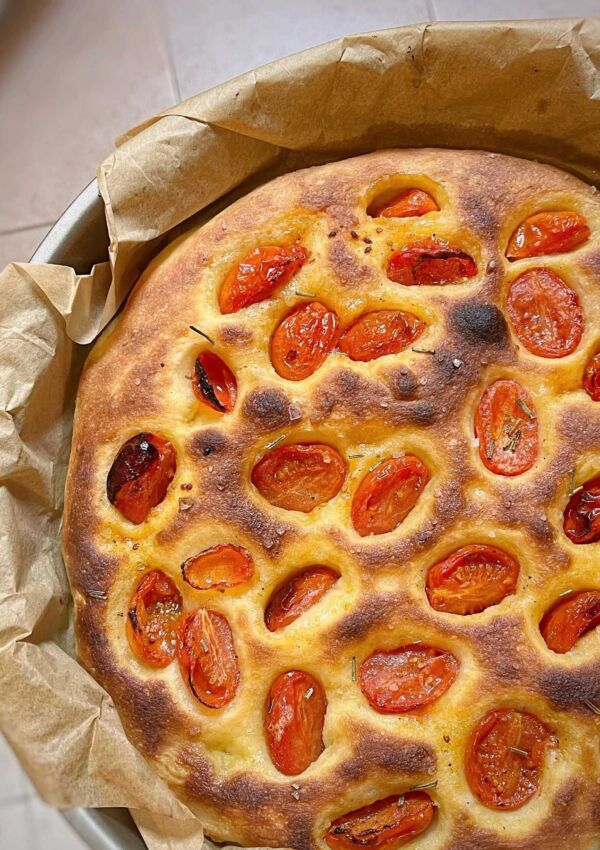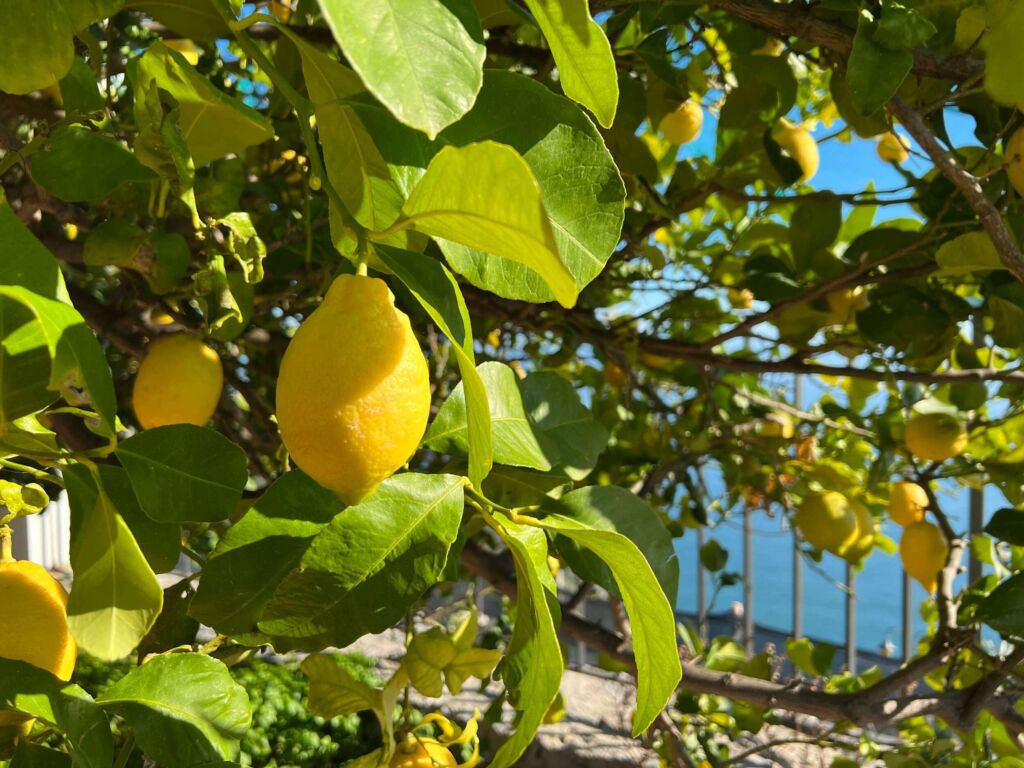
spaghetti allo scarpariello
Meaning “shoemaker pasta”, scarpariello pasta is a simple but delicious showcase of Italian flavors and fresh ingredients. It is a true representation of pasta napoletana, highlighting the tomatoes that grow and thrive in this region of Italy.
History of Scarpariello Pasta
This dish was born decades ago in the alleys of Naples. Shoemakers were often paid with pieces of cheese from customers who did not have money. Traditionally the day of rest for the shoemakers was Monday and they would prepare this pasta dish with leftover tomato sauce from their Sunday ragu, adding their gifted cheese and basil leaves.
Other historical accounts say that it was the shoemakers’ wives that prepared this dish for their husbands on Mondays for lunch with the leftover Sunday sauce and cheese the shoemakers had received as payment.
Over time, it became popular to make scarpariello pasta with fresh cherry tomatoes instead of cooked tomato sauce. The tomatoes cook gently and then are mixed with freshly grated cheese to coat the spaghetti.
Cucina Povera
Many would consider scarpariello pasta in the category of cucina povera, poor or peasant food, dishes that originated from leftovers or simple ingredients that were readily available. It is a lesson in smart cooking – making the most of what you have and creating hearty and flavorful meals. It makes me proud of my Italian ancestors and their ability to be resourceful and creative. And we still cook dishes like pasta scarpariello today, not because we have to, but because we want to.
There are many examples of these simple and delicious Neapolitan pasta dishes, including spaghetti alla Gennaro which is named after the patron saint of Naples, and pasta alla vesuviana made with a spicy tomato sauce cooked with olives and capers.
Ingredients
- Spaghetti
- Fresh cherry or grape tomatoes
- Pecorino Romano cheese
- Garlic cloves
- Fresh basil leaves
- Red pepper flakes
- Extra virgin olive oil
Any variety of small, fresh tomatoes are perfect for this pasta, like cherry or grape tomatoes. It is also common to find scarpariello pasta made with yellow datterini tomatoes, which make for a summery yellow pasta dish that beautifully contrasts the green basil leaves.
The name datterini comes from the word datteri, which is the Italian for dates (the food, not the love connection). This is because the tomatoes are shaped like little dates. We see this same naming with ciliegini tomatoes. You guessed it – ciliegi is Italian for cherries – cherry tomatoes!
Using whole cloves of garlic is a great way to infuse a subtle garlic flavor into hot oil. It is a common technique in Italian cooking to avoid a harsh garlic taste. Simply let the cloves slowly release their flavor in the hot oil and then you remove them from the sauce once they have “done their job.”
Pecorino Romano cheese is a salty, earthy, and hard sheep’s milk cheese. Similar to Parmigiano Reggiano but aged for less time, which creates a bright and tangy flavor. It is an excellent pairing with the sweet acidity of fresh tomatoes.
Step by Step
Always when making pasta, start with filling a large pot with water and setting it over high heat. When it begins to boil, salt it generously.
To start the sauce, heat about two tablespoons of extra virgin olive oil in a medium sautepan set over medium-high heat. Add the garlic cloves and a pinch of chili pepper flakes. Stir and cook just until fragrant and garlic is golden, about 1 minute. Make sure the garlic doesn’t burn.
Add the tomato halves and stir. Cook them for about 2-3 minutes. Use the back of a wooden spoon to squeeze some of the tomatoes to help them release their juices.
Remove the garlic cloves and discard them. They have released all of their garlic flavor into the oil and sauce and are no longer needed.
Add a ladle of hot water from the pasta pot to the tomatoes. Lower heat and let them simmer for 8-10 minutes. They will cook down and become soft and saucy. Season with salt and black pepper.
Stir in a handful of basil leaves, roughly chopped, small leaves can be left whole.
Meanwhile, add spaghetti to the salted boiling water and cook according to package directions.
Before draining pasta, set aside about a cup of the starchy pasta water.
Strain the al dente pasta and add to the saucepan. Add grated Pecorino Romano cheese and a few tablespoons of starchy pasta water. Mix well. You want the cheese to melt smoothly into the sauce and coat all the pasta. Add more water if necessary to develop a creamy consistency.
In most pasta dishes, grated cheese is typically added at the end as a garnish. But what sets scarpariello pasta apart from others is that the cheese is added to the sauce earlier and “creamed” with the sauce.
Serve scarpariello spaghetti hot and top with more fresh basil leaves.

Tips and FAQs
Substitutions
- Parmigiano Reggiano can be substituted for the Pecorino Romano cheese
- Try making scarpariello pasta with yellow cherry tomatoes for a sweet and sunny version!
Variations
Make this a heartier dish by cooking some crumbled Italian sausage in the seasoned oil before adding the tomatoes.
More Italian Recipes with Fresh Tomatoes
Oven Roasted Tomato and Garlic Pasta Sauce
Scarpariello Pasta Recipe
Scarpariello Pasta
Course: Primi Piatti4
servings5
minutes20
minutesIngredients
400g spaghetti
500g fresh cherry or grape tomatoes, cut in half
2 cloves garlic, whole, peeled
1 bunch fresh basil leaves
60g Pecorino Romano cheese, freshly grated
Red pepper flakes
Extra virgin olive oil
Kosher salt
Directions
- Fill a large pot with water and set over high heat. When it begins to boil, salt generously.
- Heat two tablespoons of olive oil in a medium sauté pan set over medium-high heat. Add the garlic cloves and a pinch of red pepper flakes. Stir and cook until fragrant and garlic is golden, about 1 minute.
- Add tomato halves and stir. Cook for 2-3 minutes. Using the back of a spoon, squeeze some of the tomatoes to release their juices. Remove garlic cloves and discard. Add a ladle of hot water and stir. Lower heat and simmer for 8-10 minutes until tomatoes are soft and saucy. Season with salt and stir in a handful of basil leaves, rough chopped, small leaves can be left whole.
- Meanwhile, add pasta to salted boiling water and cook according to package directions.
- Before draining pasta, set aside about a cup of the starchy pasta water. Strain and add the al dente spaghetti to saucepan. Add grated Pecorino Romano cheese and a couple tablespoons of starchy pasta water. Mix well. Add more pasta water if necessary to develop a creamy sauce.
- Serve hot and top with fresh basil leaves.









Leave a Reply
You must be logged in to post a comment.